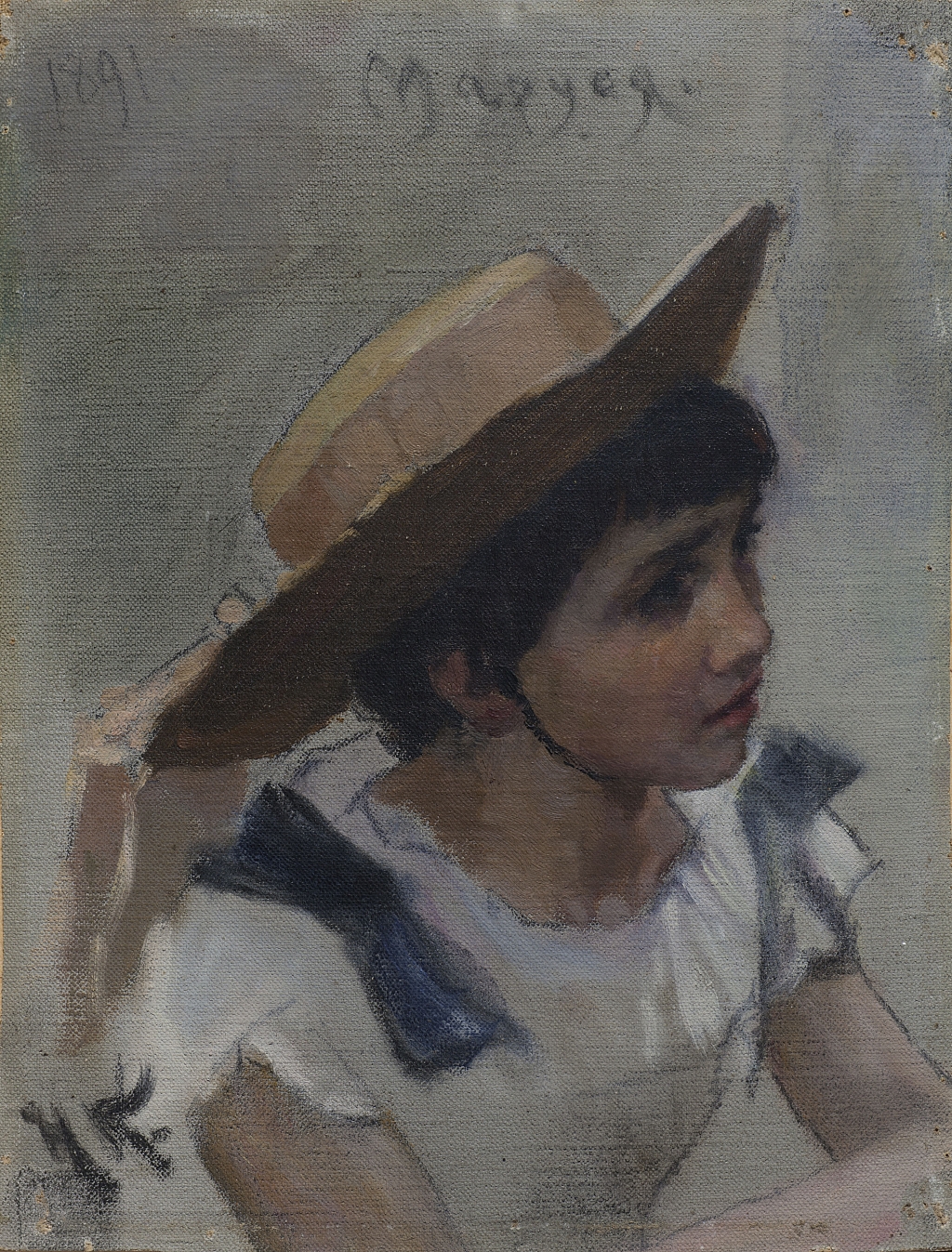
The son of a wealthy landowner, Nikolai Kuznetsov had been fond of painting since early childhood, and never felt the slightest resistance from his family and friends - on the contrary, they often willingly posed for his small-scale genre paintings. The Museum of Russian Impressionism includes two small portrait drawings by Kuznetsov, in which he depicted his own children. The portrait of Maroussia features the future prima donna of St. Petersburg’s Mariinsky Theatre - called in her family, “Maroussia.” The artist's beautiful daughter was the central subject of many of the artist's works, and Leonid Pasternak remembered the moment he first saw the little girl in Kuznetsov’s arms: "He lifted her up to the windowsill and put her down right there. By the way he readjusted her dress, one could tell how he treasured her. ‘Well, how do you like her?’ I guessed...Maroussia looked very much like her father: the same poignant look from the coal-black eyes, the same temperament, still hidden, however. ‘A future beauty!’ I answered, ''Ver-rr-ry much!” which anticipated all my replies to any further such questions. At that time, they were not yet showing the girl to everyone, she was still living 'in the kitchen,' but, in a few years Maria would show the whole of Paris, indeed the whole world, a thing or two.” Nikolai Kuznetsov's daughter would not only become a world-renowned opera singer, she would also marry happily, joining her husband’s surname (Benois) to that of her father. After the revolution she went to Paris where she established the Russian private opera. Nikolai Kuznetsov would leave Russia too, but he would prefer to settle, rather than in “Greater Europe, in the Kingdom of Serbs, Croats and Slovenians, where he would paint portraits and exhibit his work until the end of his life. Kuznetsov portrayed his beloved daughter here at a very tender age, with her short hair and wide eyes - perhaps she could not wait to escape her father's supervision, and get back to her important childish pastimes.



